Sample the Mineral Springs, Visit a Castle & Experience Cliff Dwellings
Nestled at the foot of Pikes Peak is the enticing town of Manitou Springs. What’s the attraction to this unique town? Is it the mountain air, the natural mineral springs, its history, or the wide variety of eateries and shops? Previously Manitou Springs was a hidden gem, just a short drive from Colorado Springs. Today, it abounds with visitors seeking to capture the essence of its charm. Amazing! On our visit twenty-four years ago, Manitou Springs was truly a quaint and quiet town in the foothills of Pikes Peak. Strolling the town in early July, it is bustling with summer tourists, so opt to visit some quieter attractions.
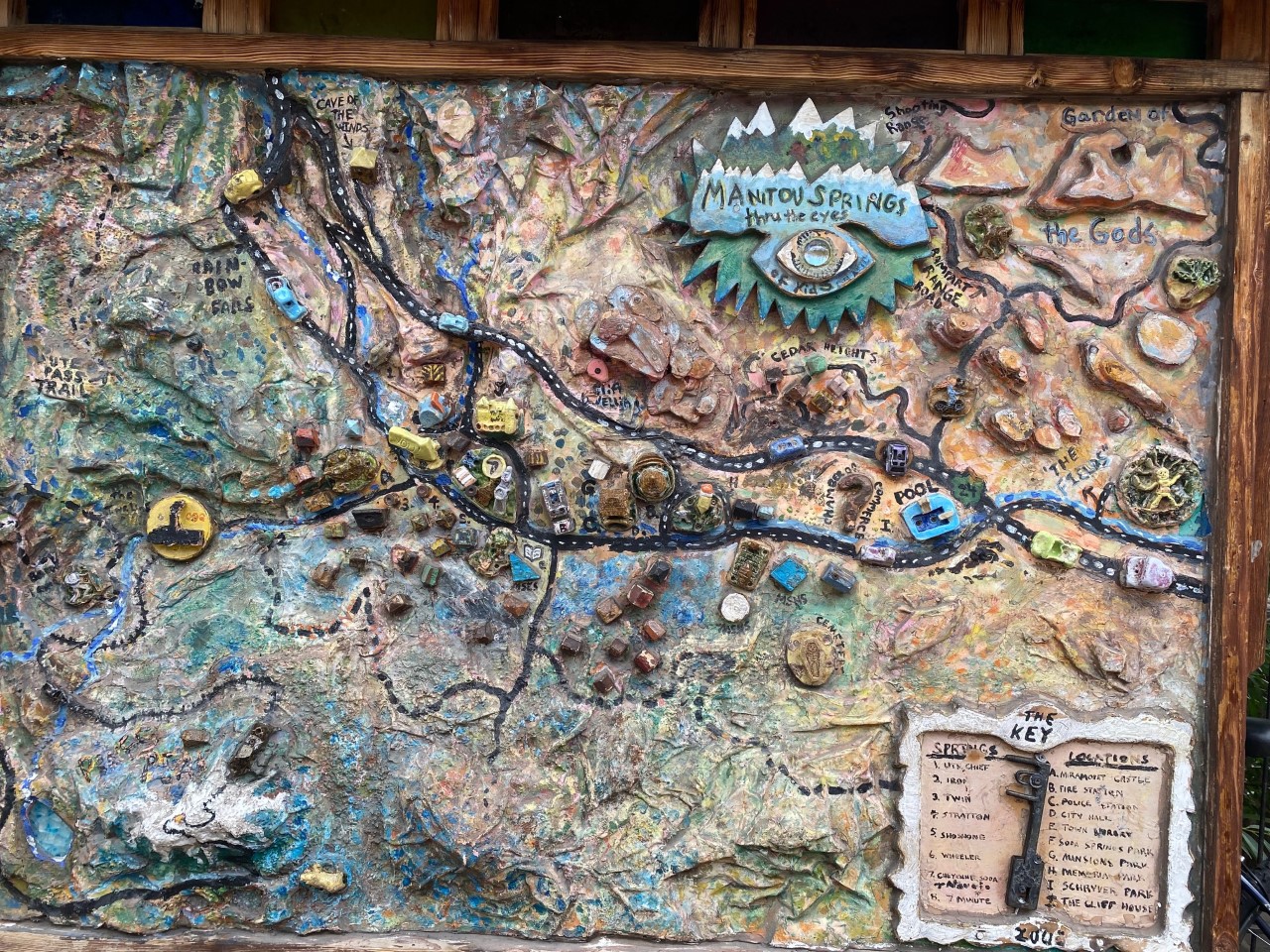
Manitou Springs: 8 Naturally Carbonated Mineral Springs
The initial attraction for visitors to Manitou Springs is to experience the 8 naturally carbonated mineral springs. For centuries, visitors have made trips “to taste the magic and mystery” of these healing waters. We recommend picking up a map of the springs and a cup for sampling. Then stroll the town and do your own “taste test” of the naturally carbonated mineral springs. For centuries people have been making trips here to taste the magic and mystery of Manitou’s healing waters. What creates the springs? The springs originate from a deep underground system of cavernous aquifers. The explanation is that as the ancient water erodes the surrounding limestone, carbonic acid is created, which gives the Manitou springs their effervescence. With its natural carbonation the water is forced back to the surface through cracks in the rocks, where it absorbs high concentrations of sodium bicarbonate (soda) and other minerals, including Lithium.
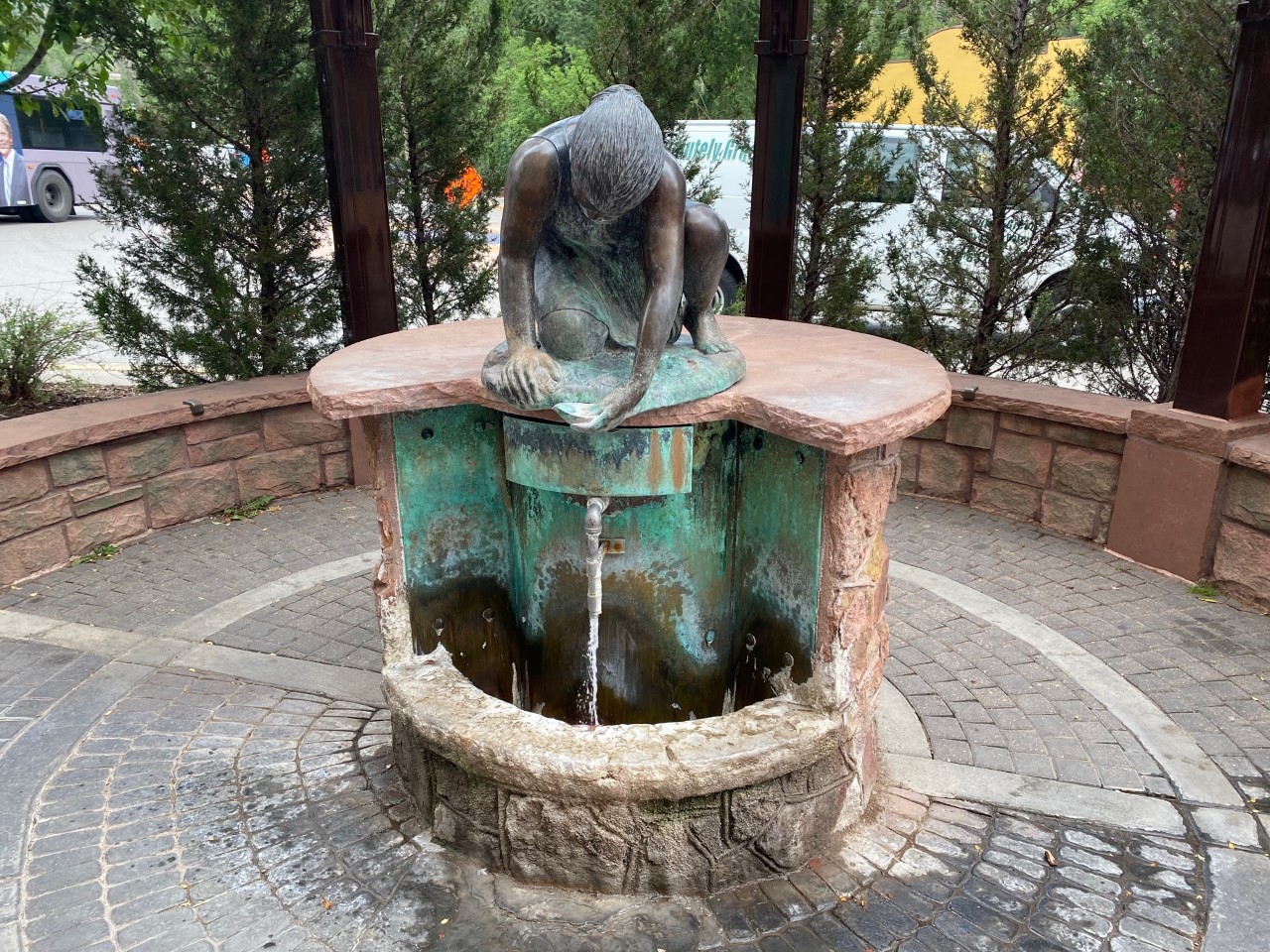
As we stroll through town, we enjoy window shopping at the wide variety of shops. A beautiful statue located in a main thoroughfare in town, is the “Spring Maiden” by Fred Darpino. Set inside an open gazebo, the Stratton Spring flows from this beautiful bronze statue of a maiden sampling the mineral spring waters. The spring is named for the Stratton Foundation, that during the Depression, provided this spring as a service to the town. A most popular spring, we take a sip. Umm, it has a sweetness to my taste. Each spring has its own taste. On our prior visit, each day, we saw people filling gallon water jugs from their favorite spring.
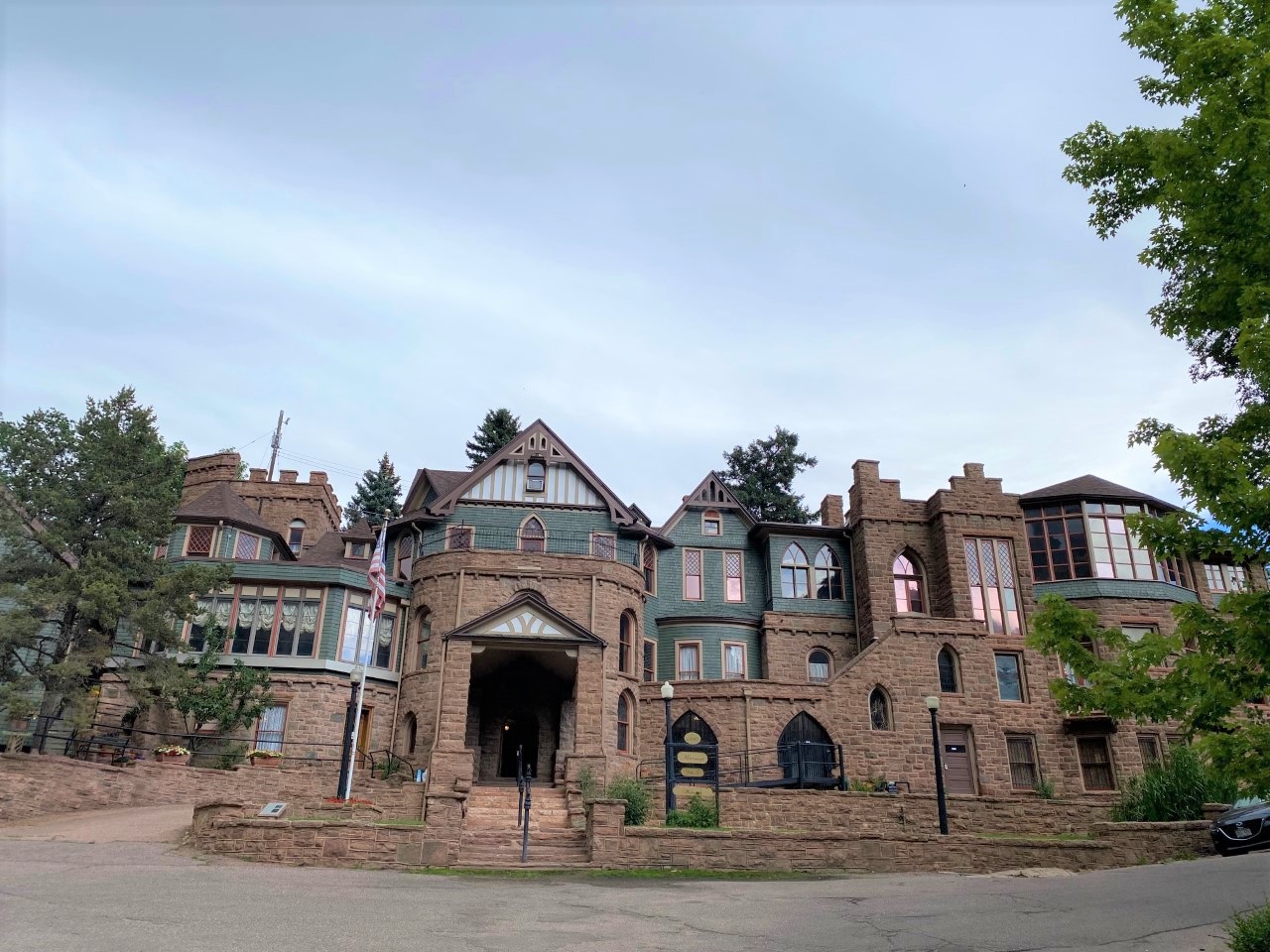
Manitou Springs even boasts a CASTLE: Miramont Castle
A Castle in Mantiou Springs? Yes, stepped into a hillside in Manitou Springs is an impressive “Castle” with a unique history. Miramont Castle was originally constructed in 1895 by Fr. Jean Baptiste Francolon. He built it as his personal residence for himself and his mother. Initially, Fr. Francolon came from France to New Mexico as the personal secretary to Bishop Lamy of New Mexico Archdiocese. Due to poor health, he moved to Manitou Springs as the Parish Priest for Our Lady of Perpetual Help in 1892. Here he designed and built Miramont Castle, a Victorian home offering 14,000 square feet and four floors with over 30 room. Upon Fr. Francolon’s return to France in the 1900’s, the Sisters of Mercy purchased the vacant Castle. During their ownership it was first used as part of their sanitarium in the summer, later it was the sanitarium, and finally transitioned in to a retreat and vacation home for the Sisters of Mercy. The Castle changed hands over the years until its purchase in 1976 by The Manitou Springs Historical Society. Today it stands as a historical building with a rich history to be shared with visitors.
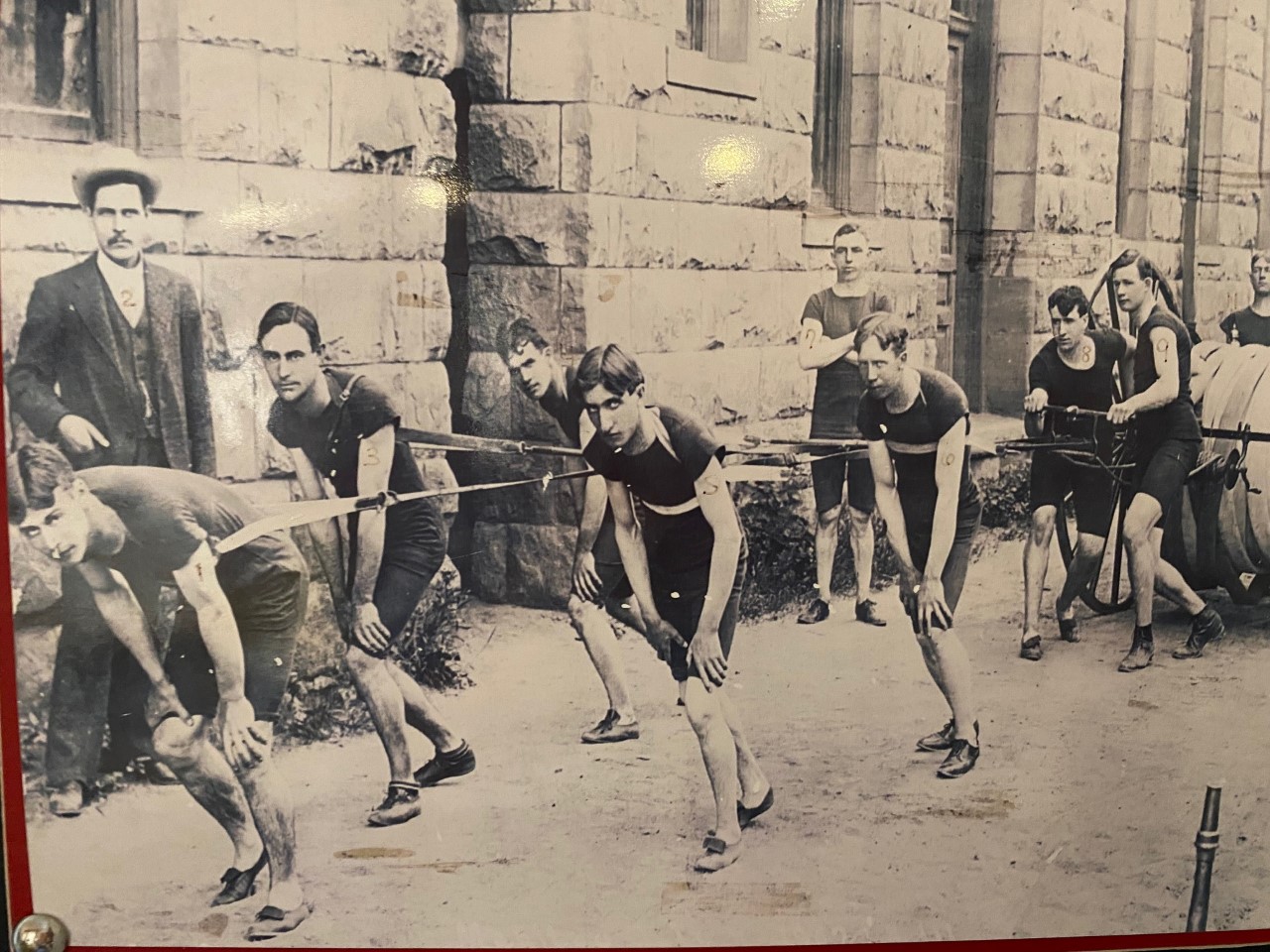
Starting our self-guided tour of Miramont Castle, it begins with a Museum on Firefighters. Here we see a wide variety of fireman’s gears, pumps, hoses and more. It is a good history lesson on fire equipment through the years. We are surprised to the see picture of the hosecart. It seems young men are harnessed to the hosecart pulling it to the fire. These young men look exhausted. For 5 ½ years these men pulled the hosecart. Thankfully, a man in town offered to have his horses pull the cart. This was much more efficient way to move the hosecart to a fire. There is also a large display of Smoky the Bear and how he became the symbol for firefighting.
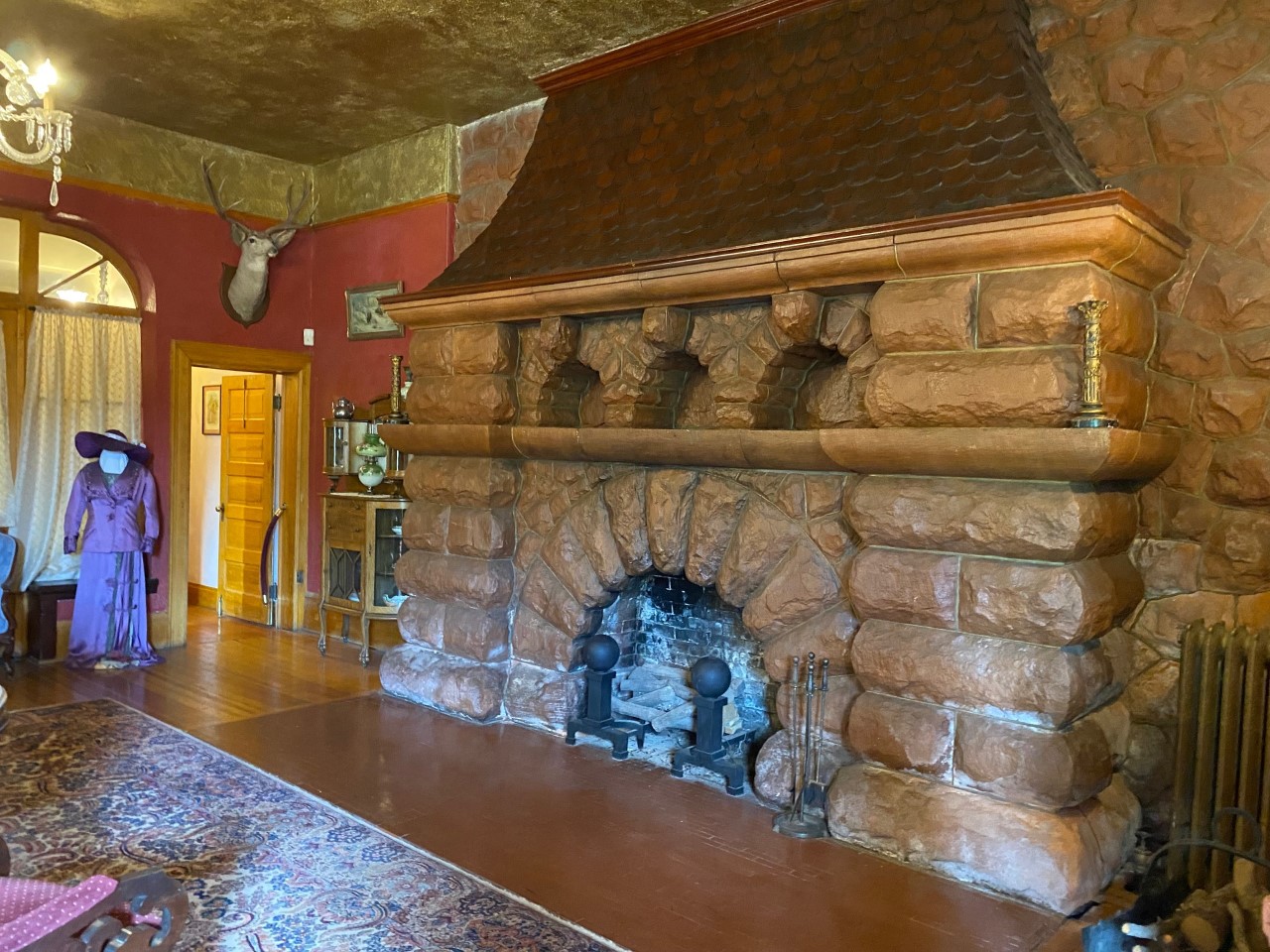
Next we ascend the steps where we step into the Hall and then the Parlor. The Parlor is decorated as it would be in the 1890’s. Impressive is 20-ton red sandstone fireplace. Across the Parlor is The Queen’s Parlour Tea Room that serves a multi-course teas. We hear ladies enjoying their tea while we visit. As we continue on, we walk by the Dining room with beautiful china and even napkins folded to look like a ballet slipper. The self-guided tour takes us to 24 rooms and locations of the Castle with descriptions of the rooms originally and later used by the Nuns. Truly a lot to see and learn about the Castle as a home, a sanitarium, and a retreat. As we continue the tour we go through various levels of the Castle. Some rooms are decorated as they would be originally while other rooms are dedicated for special historical subjects.
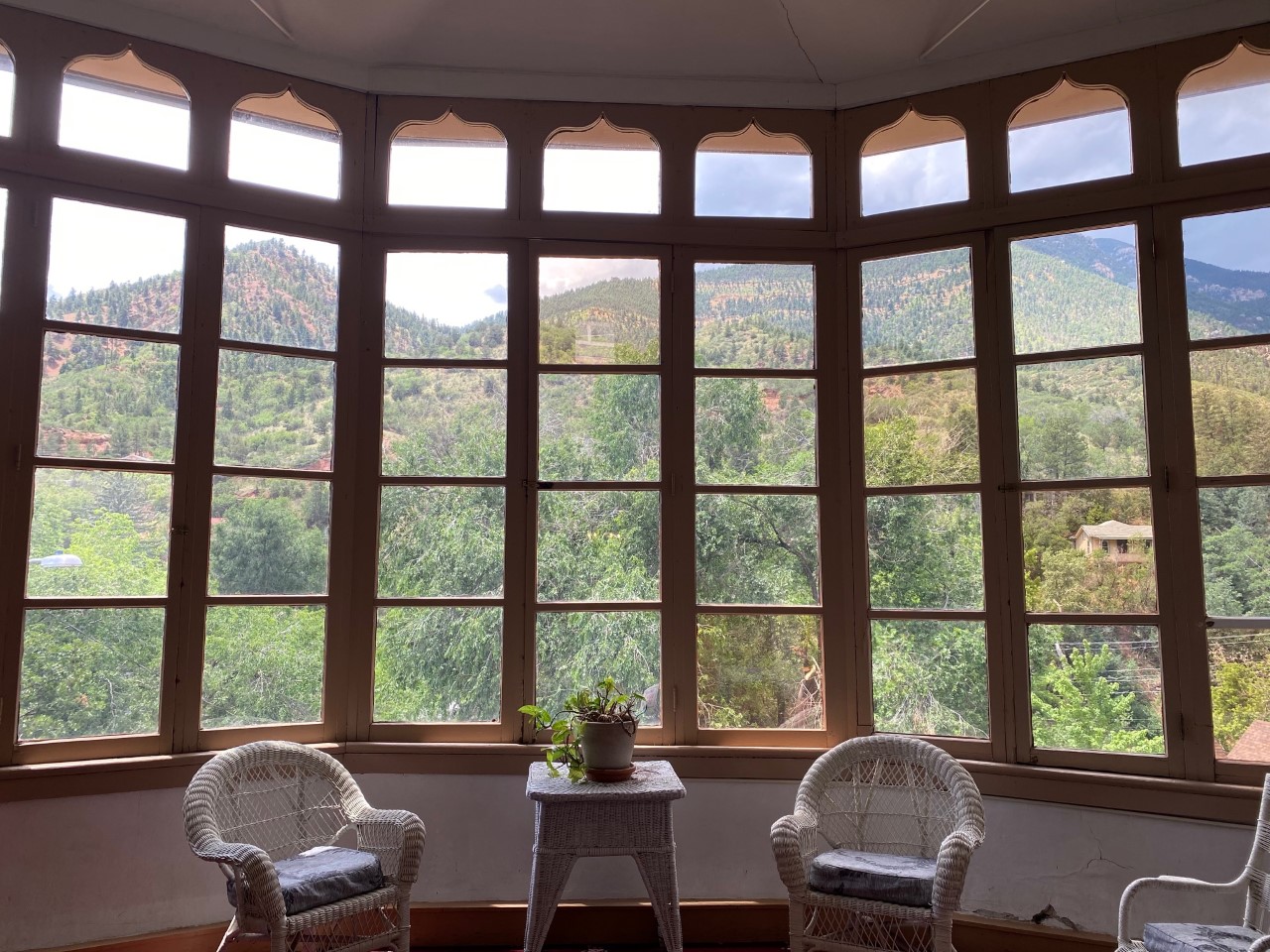
Miramont means “look at the mountains.” With the castle built into a hillside, it offers some wonderful views of the mountains surrounding Manitou Springs. At the Solarium, we admire the scenic views of the mountains of Manitou Springs. We walk through the Mother’s Dressing Room and many other rooms of the Castle. Plenty to see, so we take our time.
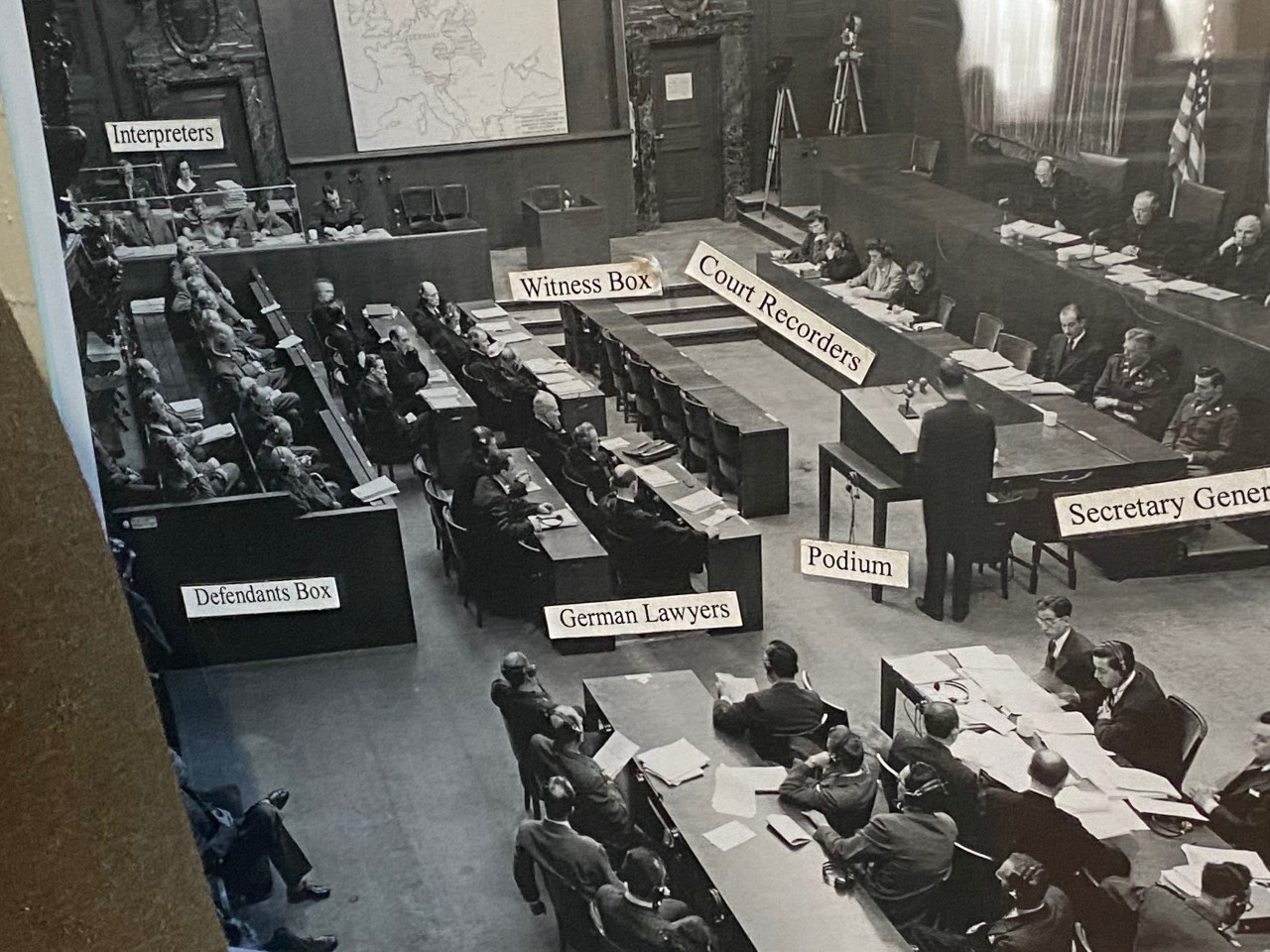
An unusual room in the Castle is Judge Young’s Office, who was from Colorado Springs. Here memorabilia from Judge John C. Young, the Presiding Judge of the Nuremberg Trials, is on display. Having visited the courthouse at Nuremberg, where the Nuremberg Trials were held, the memorabilia here is especially interesting to me. A plaque on the wall reads, “Note of Interest: The h in hilter is not capitalized for a reason. He deserves no form of recognition.” Our self-guided tour ends on the 4th floor which initially was the servants quarters. A gift shop offers a wide variety of gifts and memorabilia. We truly enjoy taking our time and learning the history of the Castle, as well as, the unique museum rooms. It is a hidden gem in Manitou Springs!
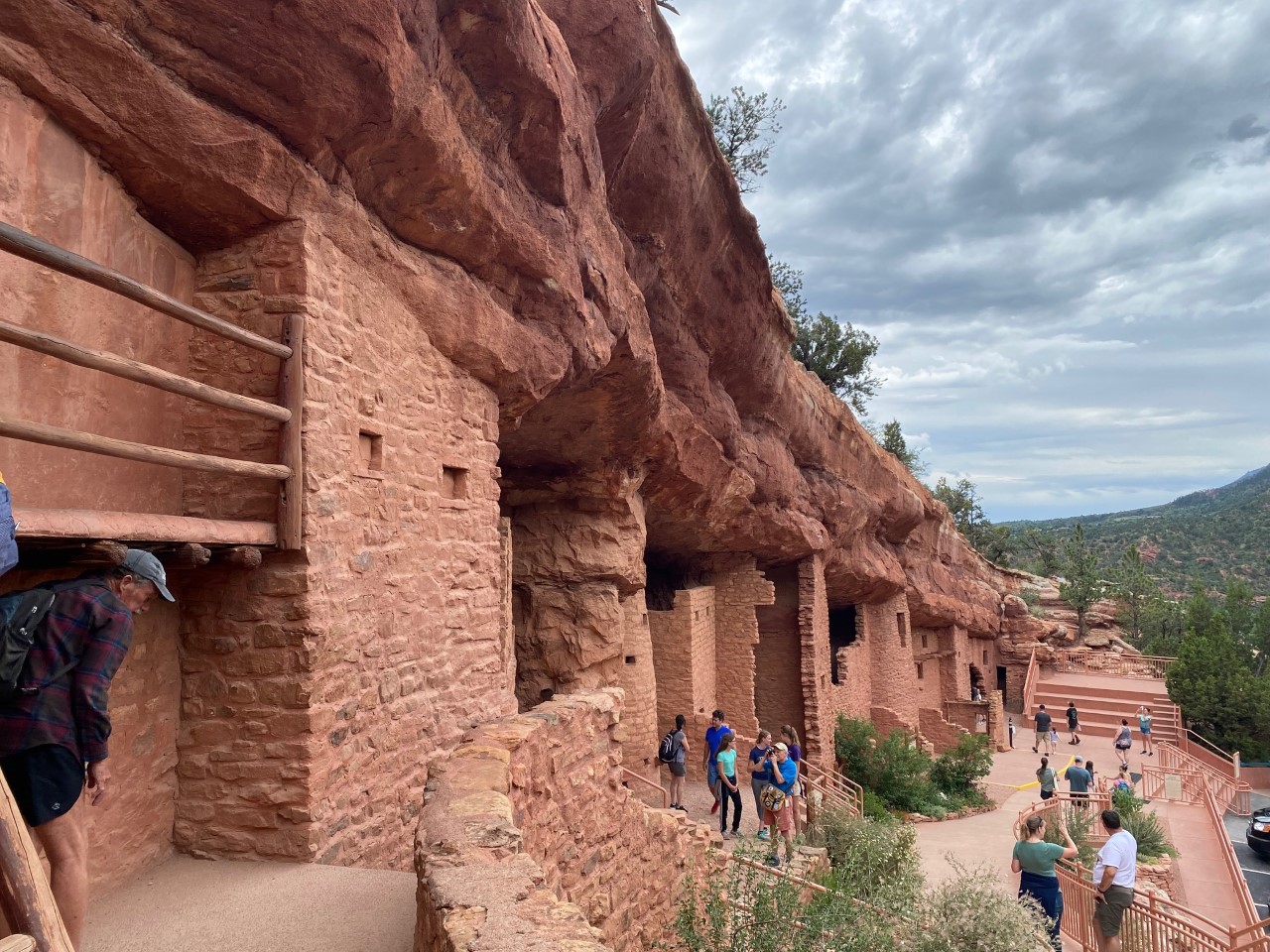
The Manitou Cliff Dwellings – Explore & Learn about life in the Cliff Dwellings
Arriving at the Manitou Cliff Dwellings, we are anxious to explore the dwellings, the fascinating architecture within a cliff, and learn about the life of ancient cliff-dwellers. First, just looking at the cliff dwellings is impressive. To think that ancient Puebloans long ago created their homes inside the cliffs. What was life like for them? How did they live? Many questions arise as we begin our tour of the Manitou Cliff Dwellings. Utilizing the self-guided tour, we follow the numbered signs on our exploration. Wow! We are allowed to reach out and touch these ancient Puebloan structures. Actually since 1907, visitors have been able to visit these authentic ancient cliff-dweller structures while learning about the life and times of the Ancestral Puebloan cliff-dwellers.
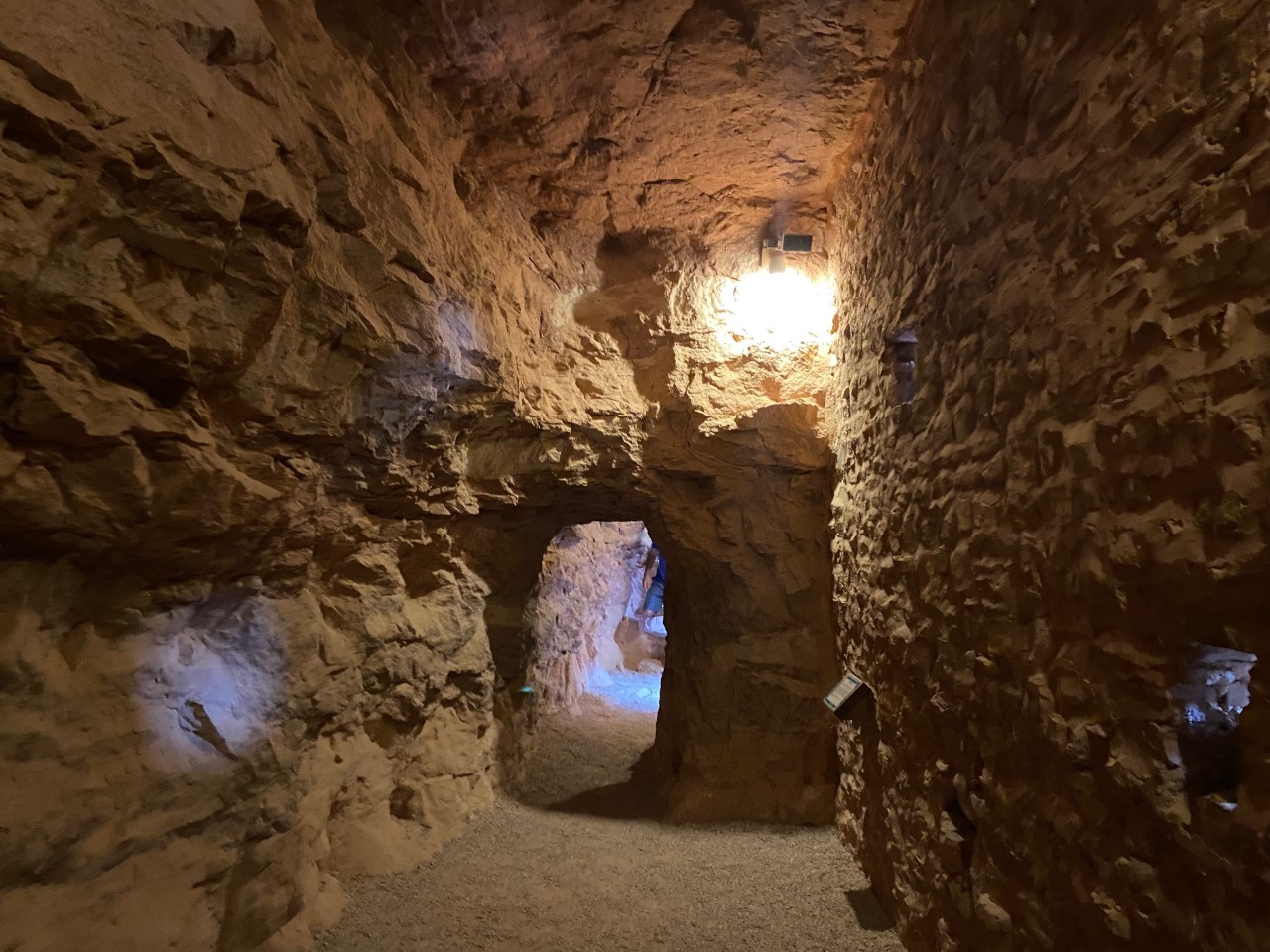
As we walk through these rooms and tunnels inside the cliff dwellings, we are amazed at the sizes, shapes, and purposes for each room. Some are units for families while others may be for storage, refuse, or religious use. The cliff dwellings can be one two or even three story structures inside the cliff. The ability to create the dwellings and the size is remarkable. A tedious and time consuming task. Yet, the cliff dwellings provide a safe home for the people, as well as being out of the elements. At one place we admire the KIVA, a circular room with a fire pit used for rituals. Here we see how the Puebloans created a room inside the cliffs and provided for the smoke from fire to be diverted outside.
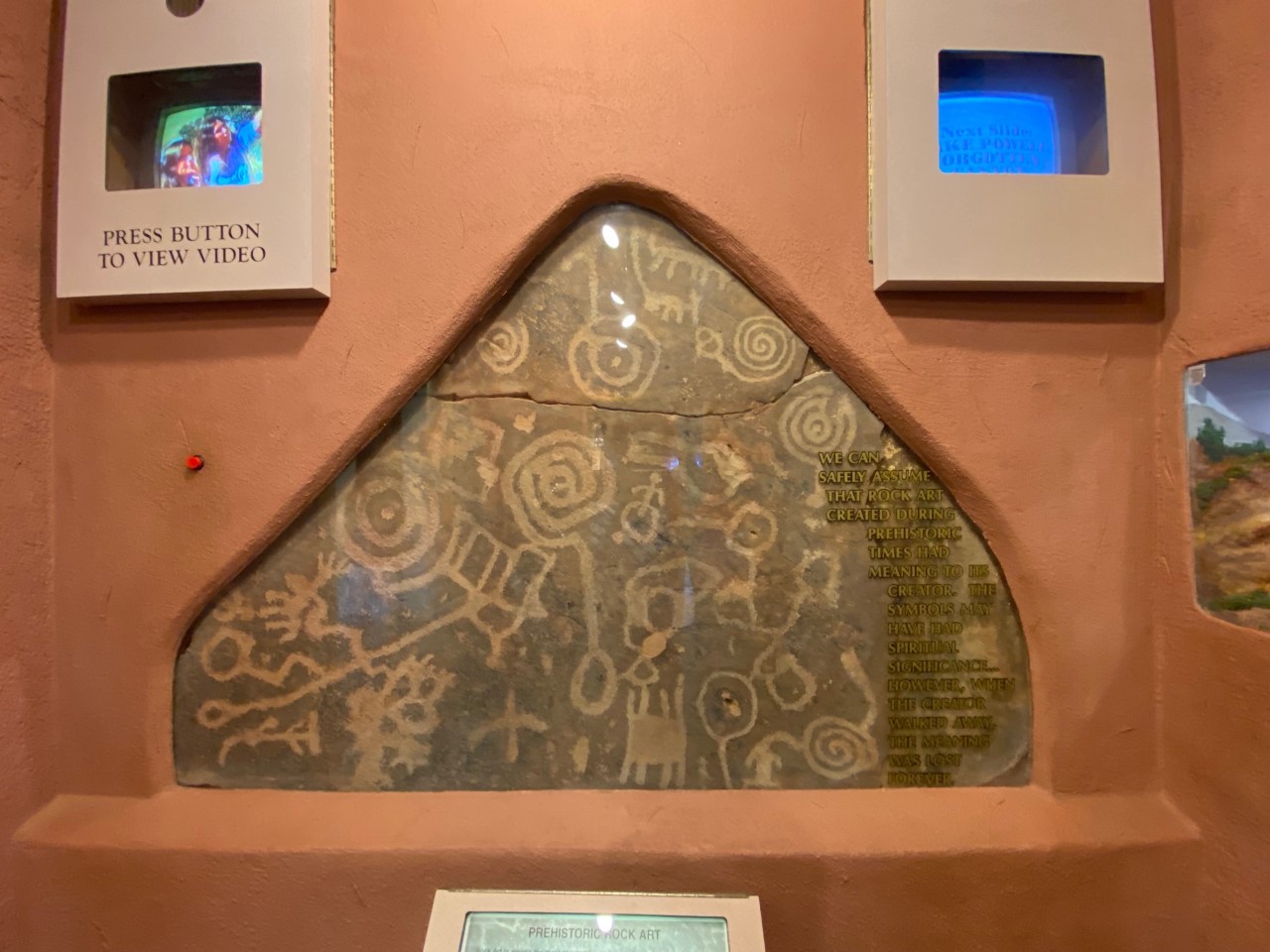
Newer additions the to the Manitou Cliff Dwellings are their Pueblo-style buildings that house two museums and a gift shop. The museums add an extra element of learning more about the life of the cliff-dwellers. The displays of the pottery, tools and weapons gives greater insight into these ancient and mysterious people. . There are numerous displays of the basket weavers. Their basket weaving skills were the mainstay in the life of one tribe. The museum educates us on how one tribe basically stays the course not adapting to to the changing times becoming basically extinct. While another tribe adapts, learns, and grows from their hardships. The visit to the Manitou Cliff Dwellings gives us great insight into the cliff-dwellers, their homes, and their lives.
Note: You can follow the numbered signs for a self-guided tour or use the APP on your phone. Due to poor cell service, we followed the signage.
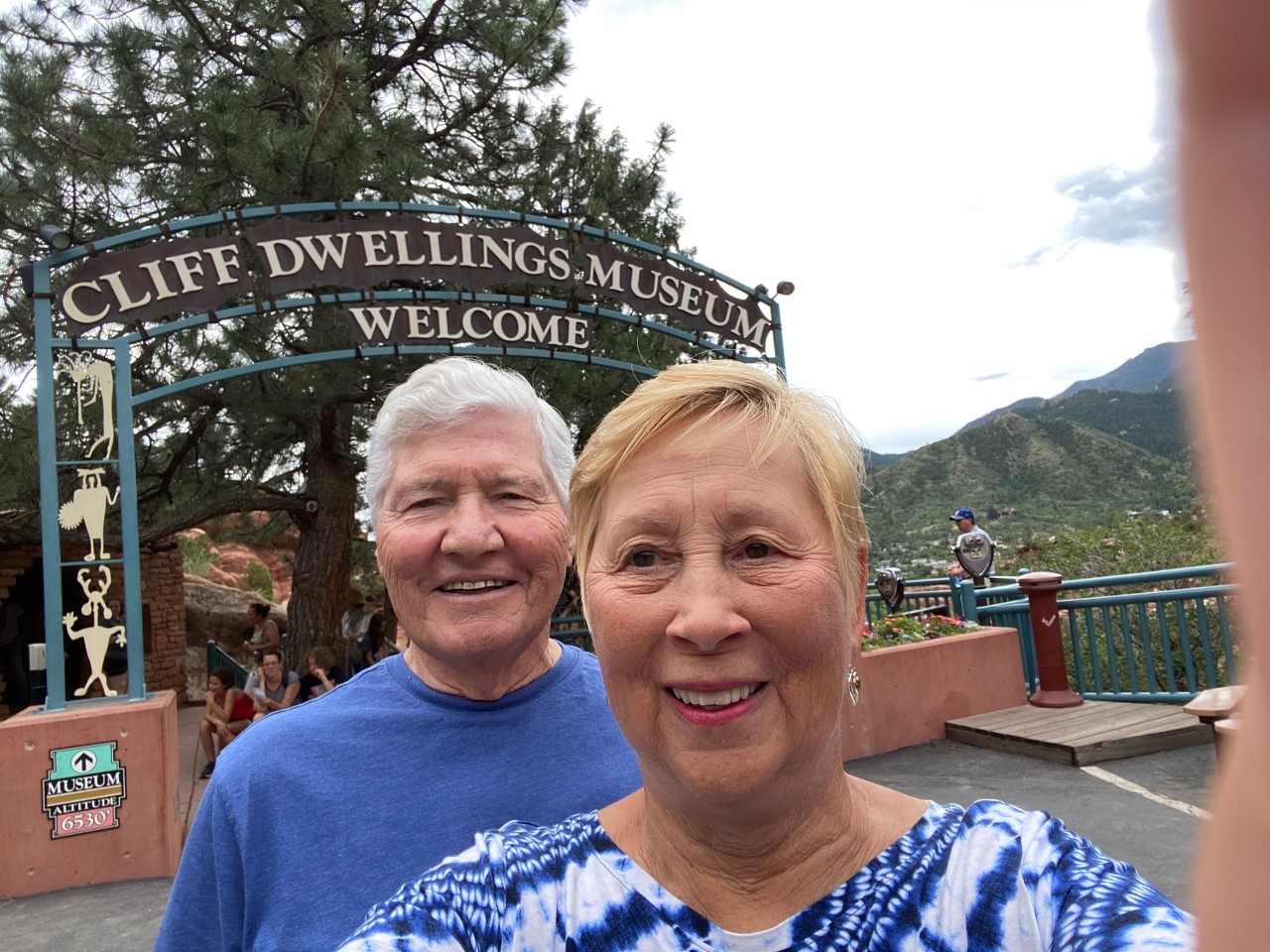
We enjoy our visit to Manitou Springs and strolling through town, checking out a few springs and window shopping. . While downtown is hectic, we are so glad we venture out to explore the Miramont Castle and the Manitou Cliff Dwellings. Two most unique and enjoyable sights. Each brings its own story about life in the past from ancient cliff-dwellers to the late 1800’s.
Check out our other adventures in the Pikes Peak are of Colorado Springs: A Foodies Delight and Fantastic Golf: Flying Horse Golf Club.

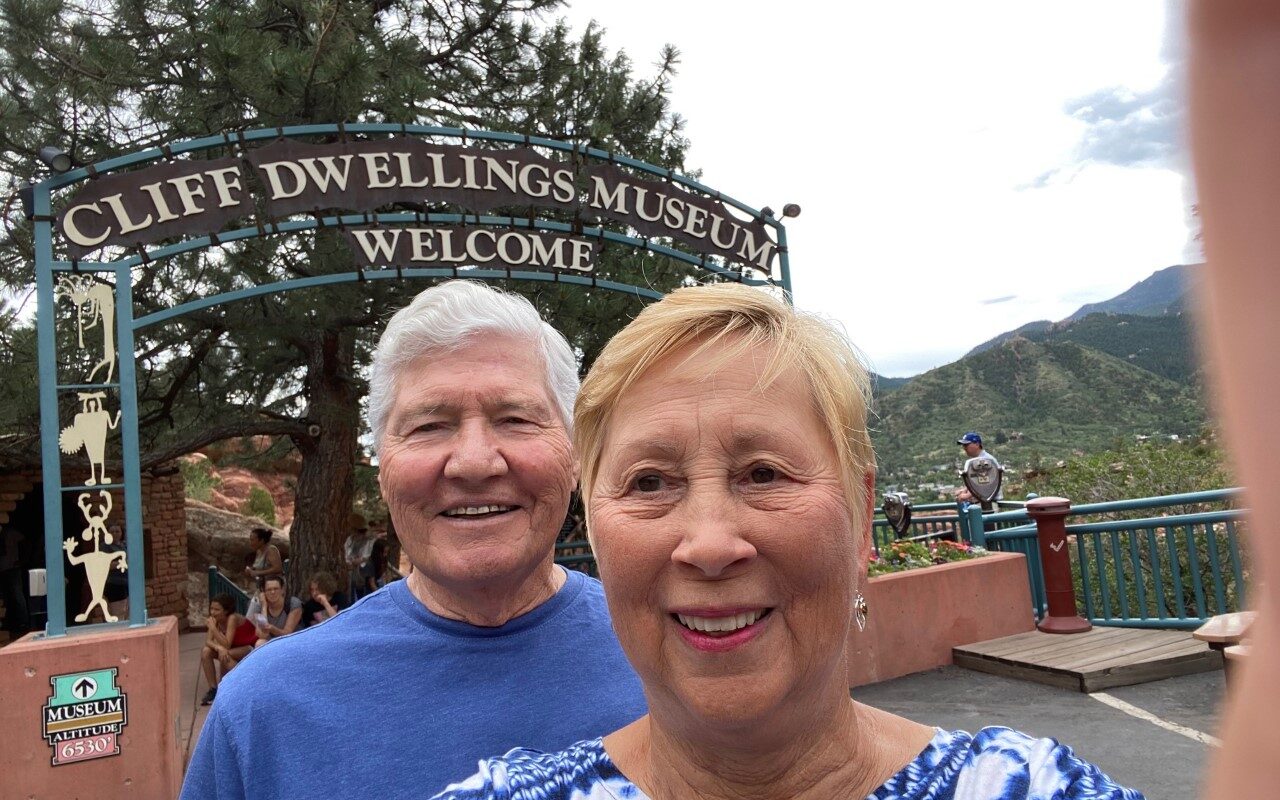
One thought on “Manitou Springs, Colorado: Rejuvenating & Historic!”
Comments are closed.